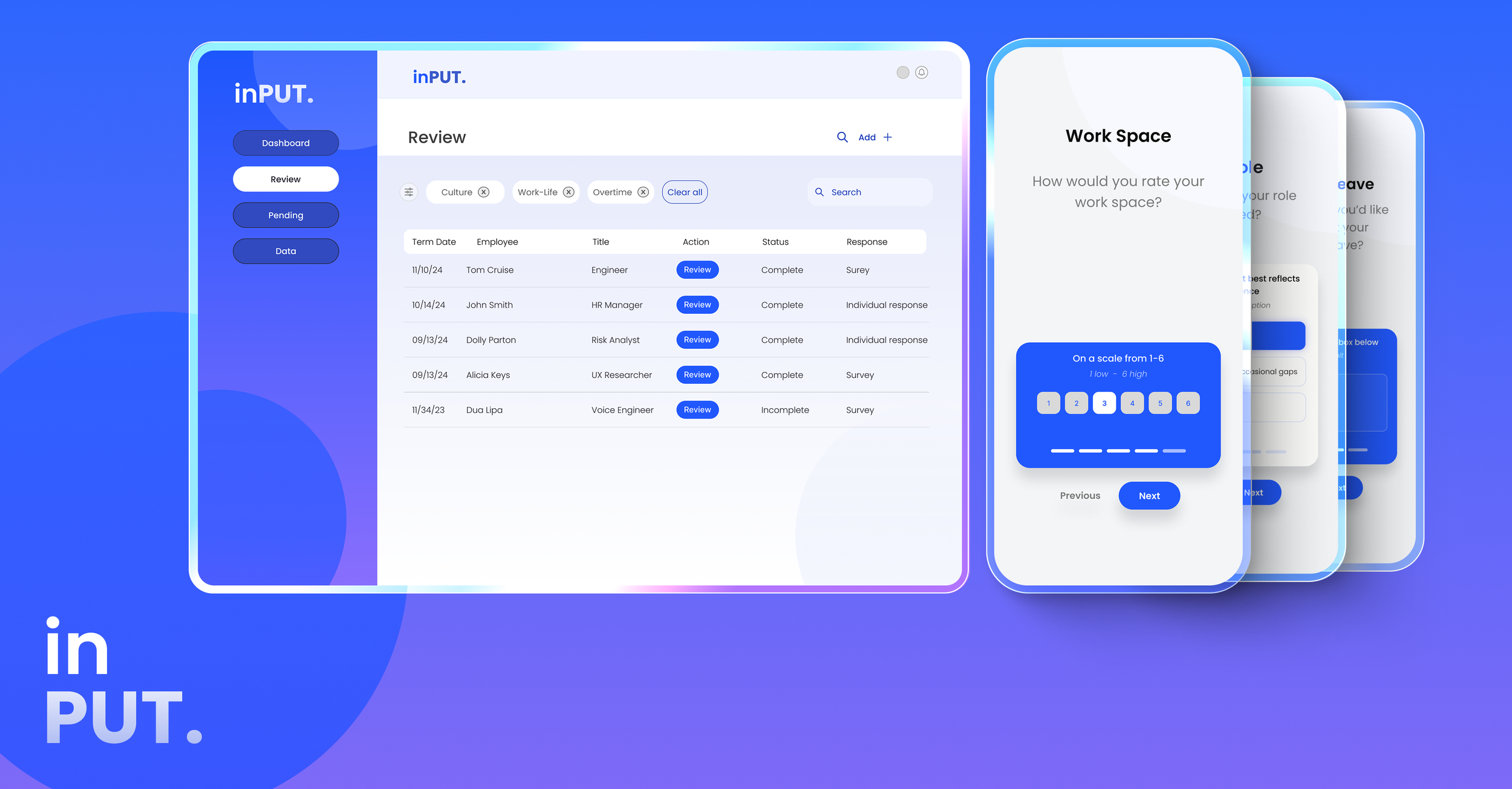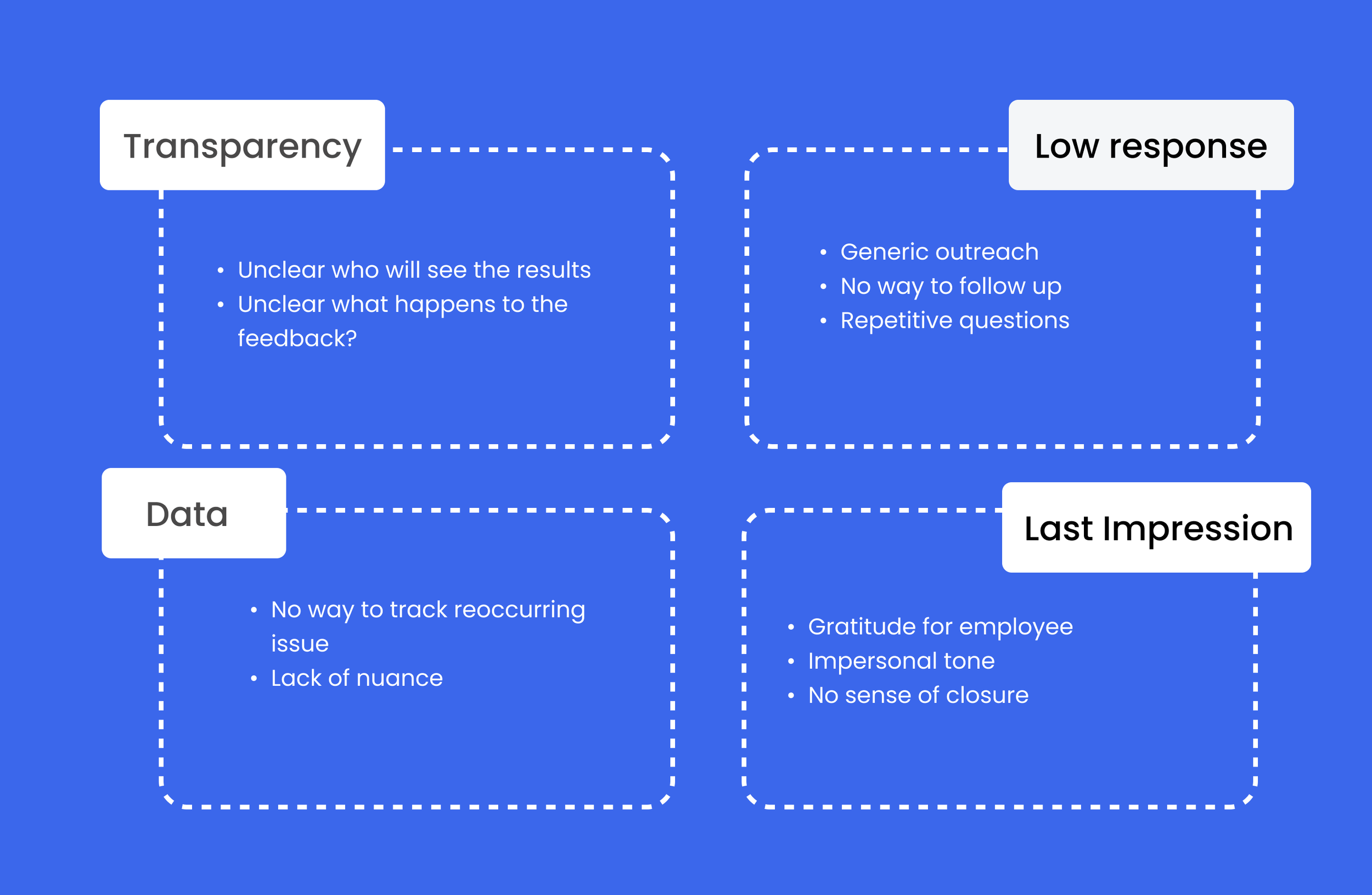About the project:
The HR team at Zipp was struggling to understand why employees were leaving.
Exit surveys were meant to provide valuable insights, but most responses were rushed, incomplete, or missing altogether.
The tools felt cold and generic—more of a formality than a conversation. Employees skipped surveys, and the few who completed them offered only surface-level feedback.
To move beyond assumptions, I conducted one-on-one interviews and a group brainstorming session with the HR team, followed by an affinity mapping exercise. These conversations formed the foundation for smarter, more empathetic design decisions.
To better understand when and why employees drop off the exit survey, I created a journey map based on their emotional and behavioral touchpoints.
This helped map out the existing problems and come up with solutions for each issue.
Early concepts were translated into low-fidelity wireframes to map out structure and flow. To make the survey approachable, employees were given a variety of response formats that balanced speed with flexibility.
A decision tree was introduced to guide users through tailored questions based on their responses. This approach reduced redundancy and kept the survey relevant and engaging. It also avoided emotional and cognitive overload.
The app’s design focuses on clarity and ease of use, with a clean layout, minimal distractions, and thoughtful use of color to guide users through each section.
The HR dashboard transforms raw feedback into actionable insights. With visual summaries, response trends, and filters by department or category, teams can quickly identify patterns and focus areas.
For the rollout, we sent an email providing employees with a clear overview of the survey process, including its purpose, expected length, and steps. By setting expectations upfront, we aimed to reduce uncertainty, build trust, and make the experience feel more approachable and employee-focused.
The pilot was conducted with 20 employees who completed the survey while thinking aloud, allowing us to observe behavior, capture questions, and gather direct feedback on clarity, flow, and engagement
After the pilot was complete, enough data had been collected to inform meaningful iterations. User behavior, drop-off points, and written feedback revealed areas for improvement, including a revised question flow organized by categories to provide clearer structure. These insights allowed the design to evolve into a more intuitive, efficient experience.
































